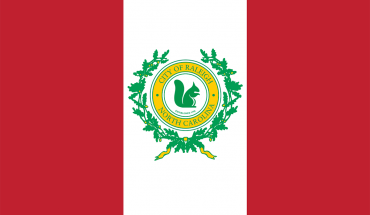
by Ilina Ewen | photography by S.P. Murray
You might expect greatness from anyone who asked for a proper fountain pen for her thirteenth birthday. “I just wanted to practice my signature,” says Dr. Paulette Dillard. And it’s a good thing she did, because as Shaw University’s President, Dillard signs on the dotted line many times a day.
Hailing from Mount Airy, North Carolina, Dillard was the first in her family to earn a college degree. She attended segregated schools until her senior year, when she was bussed to a new school through forced integration. In a class of 200, Dillard was one of six black students. Despite the change, she thrived: A dedicated and affable student who drove a baby-blue Mustang, she made friends easily, was an honors student and held a spot in her school’s royal court. It was in high school that Dillard sharpened her confidence, which is one reason she wants to help students today learn to identify their strengths.
“I want to teach kids how to learn and to foster a sense of adventure and discovery,” says Dillard. That aligns with the university’s mission: To advance knowledge, facilitate student learning and achievement, enhance the spiritual and ethical values of its students and transform a diverse community of learners into future global leaders. As president, Dillard cultivates the same love of learning that fueled her own journey.
“At its core, Shaw University is positioned to make a difference,” says Dillard. A long-standing beacon of the community, Shaw University was founded in 1865, born out of inequalities in education at the time. It is one of the oldest historically black colleges and universities in the country; its former Leonard School of Medicine was the first four-year medical school for African Americans in the country. Today, Shaw offers majors in 34 disciplines, an adult degree program at sites across the state plus a masters through its Divinity School. The university attracts most of its students from North Carolina and feeders in the mid-Atlantic, but Dillard notes a “recent spate” of students from as far away as California, where there is only one HBCU.

“I want the students of Shaw University to have the freedom to imagine,” says Dillard, whose philosophy is centered on creativity and exploration. She believes in marrying the best aspects of the scientific method with the simple notion of curiosity; she believes in integrating all aspects of learning to create lifelong students that can compete in any environment. “Success takes many forms,” she says. “It’s a matter of learning versus teaching skills.” Dillard’s dream project is to fund an interdisciplinary institute for digital storytelling that integrates film, computer science and more. “This will preserve Shaw’s legacy and make its voices come to life.”
Dillard is a self-described “whys and hows kind of person,” a trained medical technologist certified by the American Society of Clinical Pathology, who enjoyed a 25-year career in medical testing before shifting to teaching. Her trajectory at Shaw began as a biology teacher in 2012. Soon she became department head, then Dean of the College of Arts and Sciences, Vice President of Academic Affairs and, now, President. She served as Interim President starting in July 2017 and was appointed the 18th President of the university in September 2018. She went through the full formal ceremony of investiture in April.
The President’s office sits atop the iconic brick building on campus; it was built in 1873 as the first women’s dormitory at any school in the country. Here, Dillard recounted the rich history of Shaw and its legacy. She said Shaw University is considered the mother of four other HBCUs in North Carolina (the founding presidents of North Carolina Central University, Elizabeth City State University and Fayetteville State University were all Shaw alum, and NC A&T State University was established on Shaw’s campus). Prominent physician Dr. Manassa Thomas Pope was educated at Shaw in 1885—his home is one of the few standing structures from Raleigh’s Fourth Ward and the only African American house museum in the state. The Student Non-Violent Coordinating Committee was born on Shaw’s campus in 1960. (Poignant for me: one of SNCC’s founders, Julian Bond, was my professor of the History of the Civil Rights Movement at the University of Virginia.)

The office looks out over the burgeoning Raleigh skyline, and as the sound of the midday bustle floated through the windows, Dillard noted Shaw’s importance not just as a university, but as part of a growing city. Dillard is an active participant in the neighborhood at large who attends Citizen Advisory Council meetings, hosts community forums and supports neighborhood initiatives to preserve the spirit of Southeast Raleigh. “My responsibility and influence extend beyond the green quad and brick buildings of campus,” she says. “Part of my role is to remind the community that Shaw belongs to it as well as to the students entrusted in my care. Invest in Shaw because we have a lot to contribute—our history proves that.”
You’ll find Dillard in her office most days, with a special Montblanc fountain pen encrusted with a garnet, Shaw University’s signature color, given to her by the late Rev. Dr. Haywood Gray of the General Baptist State Convention. Gray was scheduled to lead the prayer at her inauguration, but sadly passed away just a week before. That pen serves as a reminder of both what she had dreamed of as a girl and the promise she holds for students today, students just a few years older than she was when she got her first proper fountain pen.



